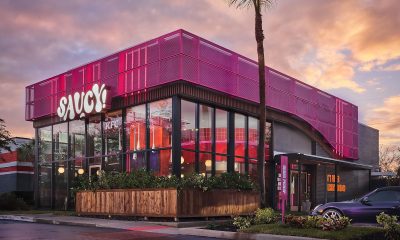Passive Income
The Key Metric You Need to Use For Rapid Franchise Growth

Entrepreneur
Whatever business you’re in, repeat customers are your best and most profitable customers. That’s true if you’re a retailer or restaurant, or a franchisor looking to expand your locations. For restaurants and retailers, it means re-defining success. With so many options available to customers, year-over-year sales growth is too short-term to just the overall health of a business. What really matters is repeat business from customers, what is called Guest Lifetime Value (GLV).
Related: Considering franchise ownership? Get started now to find your personalized list of franchises that match your lifestyle, interests and budget.
Guest Lifetime Value
In its e-book, “Guest Lifetime Value, The Real North-Star Metric for Restaurants,” Olo defines it as the revenue generated from each guest throughout their relationship with a brand. It estimates that the top 5% of GLV drives about 30% of restaurant revenue. Repeat guests over the previous six months ordered 2.2 times more than the average guest! Earning a customer’s loyalty will result in more repeat business and higher checks.
It also saves money, because acquiring new customers isn’t easy or cheap. Dividing your marketing expenses (advertising, mailing lists, the cost of discounts and promotions, etc.) by your total new customers (which may not be as easy to track as you think) to determine that cost. How much more profitable is it to get more business from existing customers? Obviously, you always want to be acquiring new customers — the trick is to then turn them into lifetime guests.
You do that by not only fulfilling their needs but anticipating them. It’s no longer enough to provide quality food or goods at good prices. Shoppers and diners today want to feel that you know and understand them. They want a relationship that will grow and deepen over time. You bring that value to them and they’ll bring dollars to you.
Related: Find Out Which Brands Have Ranked on the Franchise 500 for Longest, Earning a Spot In our New ‘Hall of Fame’
The role of technology
Fortunately, technology can help analyze that through loyalty programs, especially those linked to apps. Staff can see if a regular guest has placed an order and suggest an addition, or offer a small gift, just to build that connection. You can reach out through those apps to offer personalized messages that can bring them in for occasions (a small birthday discount, perhaps) or if they’ve haven’t been in lately, and more. It proves you know and value them.
It can even help your operations — as you learn customer behavior over time, this data can help your managers ensure that more staff is on hand at your busiest times, another factor in customer convenience.
It comes down to Business 101 — anticipate, fulfill and exceed guests’ expectations, and do so with a human touch.
For franchisors, the theory is very similar — it’s much effective to grow your business if your current franchisees buy ever more locations and territories. Franchisees are your customers, and knowing, understanding and anticipating their needs will encourage them to expand their business with you. Just like with diners, that’s more profitable for the franchisor than growing by acquiring more new business owners. (Though we like them, too.)
Think about it. After the first handful of units, a franchisor doesn’t need all of the instruction or background materials they received the first time out. They’ve already utilized your training, implemented the systems and succeeded. That saves the franchisor time and money, instead of reinventing the wheel with each new franchisee.
Here’s an example. A franchisee acquires six units for $95,000 and does so well, he acquires another five in Texas for $90,000, an additional 10 in Florida and Maryland for $180,000 each, and six more in Colorado for $105,000. But he only needed to be trained the first time and it costs the franchisor same to do an annual visit for a one-unit owner as a 40-unit owner. After that, the royalties, supplies fees and more are pure profit for the franchisor.
Related: The NLRB’s New Joint Employer Rule is So Extreme That Even California Rejected a State-Level Version of the Franchise-Killing Policy
Think like your franchisees
In addition, think of the testimonial factor — that faith and investment by your existing franchisees clearly makes your concept and business appealing to other potential unit owners and, eventually, to a potential buyer of your concept.
To achieve that, you have to think like your franchisees and understand that the customer is more than just a number. Unlike your restaurants or stores, however, there’s no app for that. You have to build those connections yourself. Host franchisee events and get to know them as people, not just numbers beyond the initial interviews. Talk to them about why they’re investing, their future goals, their kids’ names.
Be available to them (within reason). Serve them well, answer their questions, listen to their suggestions, and continually investigate how to improve your business model to improve their sales. That’s your GLV.
Read the full article here

-

 Side Hustles5 days ago
Side Hustles5 days agoThe Day Trader’s Guide to Making Money Without Tying to a Desk
-

 Side Hustles4 days ago
Side Hustles4 days agoHow Charlotte’s Rally Pickleball Got Its Start
-

 Make Money4 days ago
Make Money4 days ago5 Surprising Ways Trump’s Trade Agenda Could Affect What You Pay at Checkout
-

 Investing4 days ago
Investing4 days agoQuantum stock soars on new file system client By Investing.com
-

 Investing6 days ago
Investing6 days agoTrump signals potential reconsideration of TikTok ban By Investing.com
-

 Side Hustles2 days ago
Side Hustles2 days agoKickstart Your Year With These Entrepreneurial Health Checkups
-

 Passive Income5 days ago
Passive Income5 days agoHow Mission-Driven Leadership Fuels Growth in the Digital Era
-

 Passive Income4 days ago
Passive Income4 days ago7 Things You Need to Consider Before Expanding Your Business


















